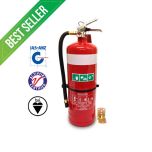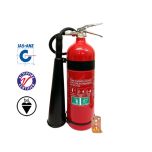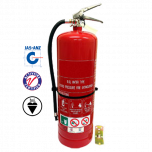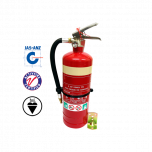There are 5 main fire extinguisher types in Australia – Water, Foam, Dry Powder, CO2 and Wet Chemical. You should have the right types of fire extinguisher for your house or business premises, or you may not meet current regulations.
The various types of fire extinguisher put out fires started with different types of fuel – these are called ‘classes’ of fire. The fire risk from the different classes of fire in your home or your business premises will determine which fire extinguisher types you need.
You will also need to make sure that you have the right size and weight of fire extinguisher as well as the right kind.
Whilst there are 5 main types of fire extinguisher, there are different versions of Dry Powder Chemical extinguishers The types of fire extinguisher are:
– Water
– Foam
– Dry Powder – ABE
– Dry Powder – BE
– Carbon Dioxide (‘CO2’)
– Wet Chemical
There is no one extinguisher type which works on all classes of fire.
Below is a summary of the classes of fire, and a quick reference chart showing which types of extinguisher should be used on each. We then provide a detailed explanation of each type of fire extinguisher below.
The classes of fire
There are six classes of fire: Class A, Class B, Class C, Class D, Class E, and Class F.
– Class A fires – combustible materials: caused by flammable solids, such as wood, paper, and fabric
– Class B fires – flammable liquids: such as petrol, turpentine or paint
– Class C fires – flammable gases: like LPG, hydrogen, butane or methane
– Class D fires – combustible metals: chemicals such as magnesium, aluminum or potassium
– Class E fires – electrical equipment: once the electrical item is removed, the fire changes class
– Class F fires – cooking oils: typically a chip-pan fire
An easy way to determine which fire extinguisher to use is by the different coloured bands on the top of each cylinder.
This coloured band tells us what type of fire extinguisher it is therefore allowing us to recognise which fire to use it for.
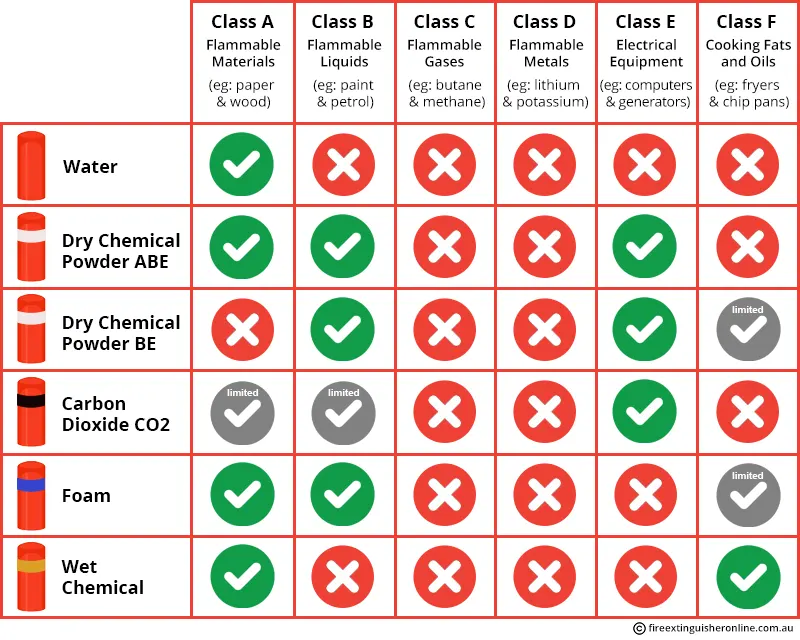
Water Extinguisher
Water Fire extinguishers are for Class A fires only - they should not be used on Class B or C fires. The discharge stream could spread the flammable liquid in a Class B fire or could create a shock hazard on a Class C fire.
A Water extinguisher is identified by its all red cylinder and red band that runs around the top of the tank.
Dry Chemical Powder Extinguisher
Dry Chemical Powder fire extinguishers extinguish the fire primarily by interrupting the chemical reaction of the fire triangle.
They are effective on Class A, B, and E fires. They contain a chemical powder called monoammonium phosphate which extinguishes the fire when it spreads and melts over the flames. This agent also works by creating a barrier between the oxygen element and the fuel element on Class A fires.
A dry chemical fire extinguisher is identified by its all red cylinder and white band that runs around the top of the tank.
BE dry chemical is for Class B & E fires only. It is important to use the correct extinguisher for the type of fuel! Using the incorrect agent can allow the fire to re-ignite after apparently being extinguished successfully.
Carbon Dioxide Extinguisher
Carbon Dioxide fire extinguishers extinguish fire by taking away the oxygen element of the fire triangle and also be removing the heat with a very cold discharge.
CO2 fire extinguishers contain a non-conductive and non-corrosive extinguishing agent therefore will cause no damage to electrical equipment which make it perfect for areas such as electrical switch rooms, server/data rooms, electrical machinery and offices..
Carbon dioxide can be used on Class B & E fires. They are usually ineffective on Class A fires.
A CO2 extinguisher is identified by its all red cylinder and black band that runs around the top of the tank.
Foam Extinguisher
Foam fire extinguishers work by forming a layer over the top of the burning substance which stops the fire by cutting off access to oxygen. Foam extinguishers are effective to combat Class B fires. They can also be used for Class A fires which include wood, plastic, textiles, and paper.
Foam fire extinguishers are generally used within warehouse’s, petrol stations and storage facilities and are not recommended for use on class F fires (cooking oils and fats).
A Foam fire extinguisher is identified by its all red cylinder and blue band that runs around the top of the tank.
Wet Chemical Extinguisher
Wet Chemical Extinguishers contain a solution of potassium, this solution smothers the fire and removes the element of heat. It prevents re-ignition by creating a barrier between the oxygen and fuel elements.
Wet chemical Class F extinguishers were developed for modern, high efficiency deep fat fryers in commercial cooking operations. They may also be used on Class A fires in commercial kitchens.
A Wet chemical fire extinguisher is identified by its all red cylinder and yellow band that runs around the top of the tank.

